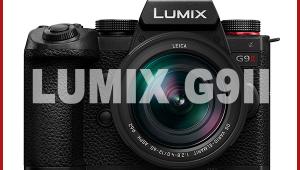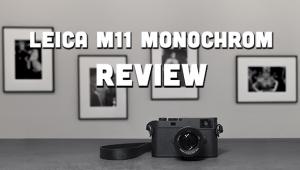Sony Alpha A7R Mirrorless Camera Review
The Sony A7 and A7R are the first mirrorless system cameras with a full-frame sensor. The A7 offers a sensor size of 35.8x23.9mm and a resolution of 24MP, while the A7R has a slightly larger sensor at 35.9x24.0mm and 36MP resolution. Both cameras use the E-mount lens system that was introduced with Sony’s NEX cameras. Because NEX cameras use APS-C-sized sensors all previous E-mount lenses have smaller image circles, thus the full-frame models require new E-mount lenses, which cover the larger image circle of a full-frame sensor.

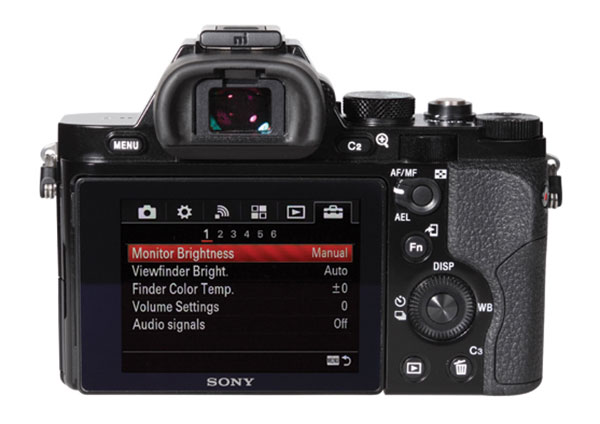
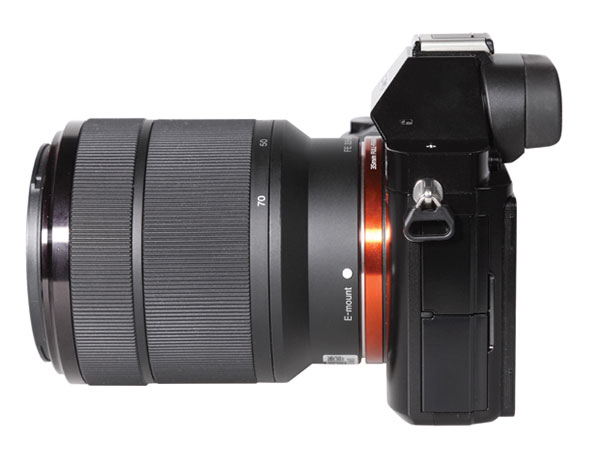

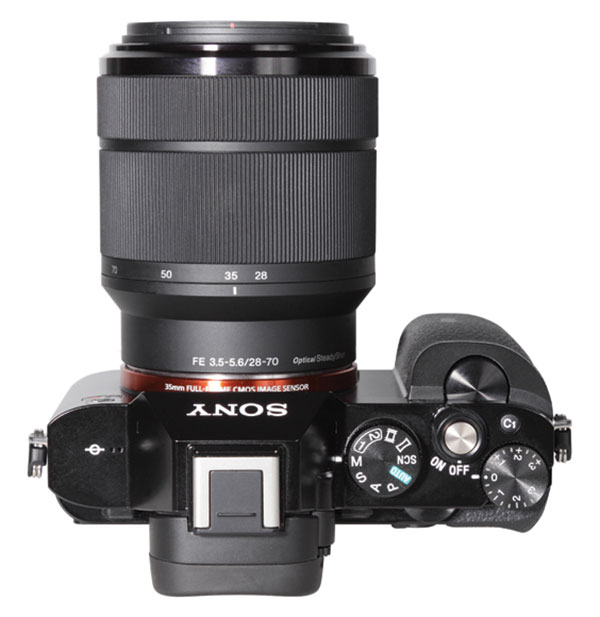
We did our tests with the new FE 28-70mm f/3.5-5.6 OSS lens, which is one of four currently available lenses for these cameras. Sony lenses with A-mount, which were developed for full-frame cameras like the Sony A99, can be used with the help of an optional Sony adapter, the LA-EA4. This adapter offers additional AF functionality with phase detection and 15 AF sensors.
Besides the different resolution, the A7 and A7R show another detail in which they differ. The A7R uses a sensor without a low-pass filter. This filter is normally used to reduce aliasing and moiré effects, but works a little like a blur filter, and therefore reduces image details. The A7R lacks this filter and offers the highest possible detail reproduction.
The design of the camera is very traditional. Its body is based on a magnesium alloy chassis and looks very robust, even though it is very lightweight and a lot smaller than traditional full-frame sensor SLR systems. Indeed, with its sharp-edged “prism hump” it looks a little like an SLR system from the 1970s or ’80s. Its electronic viewfinder is based on OLED technology and offers an extremely high resolution of 2.36 million RGB dots, creating a very crisp and clear Live View reproduction. Using the viewfinder magnifier and the focus peaking function, manual focus is very handy and functional. The camera has a swivel monitor (it can be flipped up- and downward) with 921,600 RGB dots. It’s a high-quality monitor with a very bright and brilliant image reproduction, although we think a higher resolution would be a benefit.
The camera has a lot of function buttons, setup dials, and more to allow for very easy handling. A special setup dial on the top can be used to change the EV compensation. Two setup dials on the top (one near the shutter release button, one on the back) and a third dial (which is also used as cursor/control field) help the photographer to change all parameters quickly and efficiently. The Fn button on the back can be assigned to many selective functions, plus customer-defined function buttons like “C1” or “C3”on the top allow for a very individual set up of the camera to match specific subjects, scenes, and lighting conditions.
The camera showed an average performance in our AF tests even though the camera uses the brand-new “BIONZ X” processor. The AF focusing is a little slower than Panasonic and Olympus CSC cameras; Sony’s SLT cameras, with their dedicated AF sensor, are faster than the A7R.
The camera reaches a maximum of 4 frames per second in S mode. In all other automatic or semiautomatic modes the burst rate is quite slow (around about 1.5 to 2 frames per second).

Comments On Still Image Quality
Color: The automatic white balance system of the Sony A7R did a good job. The color test chart was reproduced with neutral colors, with only the brightest gray pattern (white and very light black) showing a shift into the green area. The camera created very natural colors with an average saturation of 104.7 percent, which is very accurate. While the standard test box shot has only a slight shift into the yellow and green direction, the portrait shot has a bluish/greenish look, especially in the bright (nearly white) background. The skin tones are fine. Skin tones in the test chart are reproduced nearly perfectly. Only the brighter skin tone shows a slight shift into the magenta area and creates a “tanned skin look.”
Sharpness: The new Sony showed a very good performance in our resolution tests. The camera gained a maximum of 4397 lines per picture height compared to the nominal resolution of the sensor of 4912 lines per picture height. (Note: Our testers had the impression that the new lens system is the bottleneck of the system and that resolution results would have been even higher when using one of the new Zeiss lenses for E-mount and full-frame sensor systems.)
Nevertheless, the images display a lot of details. The JPEGs had a little softer look due to standard image settings of the camera. The photographer can enhance the “crispness” by using Raw images and a little higher sharpness setting in the converter software. Despite this observation, details like the figures on the ruler in our standard test box shot and the fine structures in the portrait shot are clearly visible as is the differentiation of all colors. Even the red nuances of the model’s T-shirt or the red color of the spools in the test box shot look very clear.
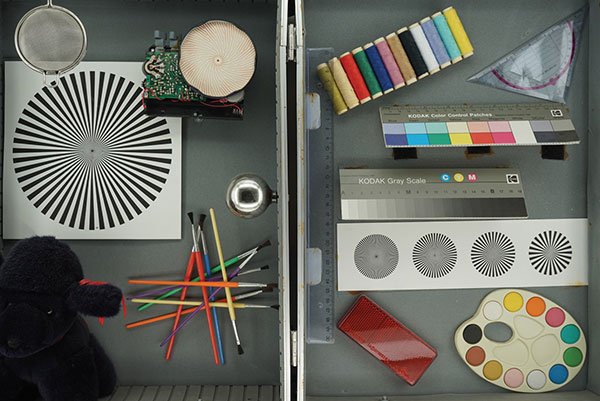
Noise: The luminance noise results of the A7R are excellent. The camera keeps luminance noise on a very low level. Even at the highest ISO settings the luminance noise factor is way below 1.0 percent. Only part of this comes from an intense anti-noise filtering. The noise filtering reduces color noise very efficiently but also causes the typical “anti-noise filtering look” in images taken at ISO 6400 and above. In the highest ISOs the details in the images are smoothed and reduced.
The dynamic range results are good: the maximum of 10.8 f/stops isn’t a world record, but the camera keeps that level high (above 10 f/stops) in ISO speeds between 1000 and 3200, which is very good.

Comments On Video Formats
The camera can record Full HD mode with 1920x1080 pixels and 60 frames per second in progressive mode. It offers numerous movie modes with different frame and data rates. It is possible to use NTSC frame rates between 29.97 frames per second and 60 frames per second or PAL frame rates with 25 and 50 frames per second.
The different frame and data rate modes allow the user to set up the camera for the best image/video quality or to use space-saving video modes. The camera uses an MP4/H.264 compression and records its videos in standard AVCHD mode, which makes it easy to edit the clips in all standard video editing software.
The camera offers an HDMI interface for video presentation on HDTVs. The camera also offers a microphone port (3.5mm jack) for better sound recording and even an interface for a headphone. This allows the user to control the sound recording quality and sound level.
The camera allows the user to shoot video in all manual exposure modes. The user can choose P, S, A, and M mode and manually change the ISO speed setting. Video recording can be started at any time because the camera has an additional video record button on its right-hand side. It also offers a special video mode, activated by the mode dial on the top.
The Sony A7R doesn’t use an integrated image stabilizer system. Just like the NEX cameras it depends on additional image stabilizers in the lens systems. We used the new FE 28-70mm f/3.5-5.6 OSS during the video tests. Its stabilizer (“OSS”) worked well in photo mode and in video mode.

Comments On Video Quality
The videos from the Sony A7R showed very exact and realistic colors. Only the 100 percent cyan of the test chart is a bit desaturated. The color characteristics match the color reproduction in photo mode: skin tones are reproduced nearly perfectly; only the brighter skin tones have a slightly higher magenta rate. The automatic white balance system works fine but shows a slight tendency toward the yellow and green direction, just as it does in photo mode.
The Sony reproduced the ISO 12.233 chart with 751 lines per picture height, which is an average result for D-SLRs but far below the superb results of the Panasonic GX7, for example. The Sony creates a slightly soft video look, perhaps to prevent the appearance of moiré effects. While other Sony cameras have a small problem with aliasing and moiré effects, there are nearly no issues noticeable in the video clips shot with the A7R.
Scorecard
Pro
+ First CSC system with full-frame sensor
+ Small and light but robust body
+ Easy handling, “traditional”camera and handling concept
+ Electronic viewfinder with very high resolution makes manual focusing easy
+ WLAN system including NFC for easy connection between camera and smartphone
Con
- Swivel monitor can only be flipped up- and downward
- Burst mode with up to 4 frames per second only in S mode
- No built-in flash system
Image Tech is where we publish web-exclusive lab reports on cameras. To read the reports please go to the Shutterbug homepage at www.shutterbug.com and click on the Image Tech tab on the top navigation bar. New reports are published frequently, so check Image Tech for updates.
The Sony Alpha A7R has a list price of $2299.99. For more information, visit www.sony.com.
Lab results and test images by BetterNet, our TIPA-affiliated testing lab. Edited by George Schaub.
- Log in or register to post comments





